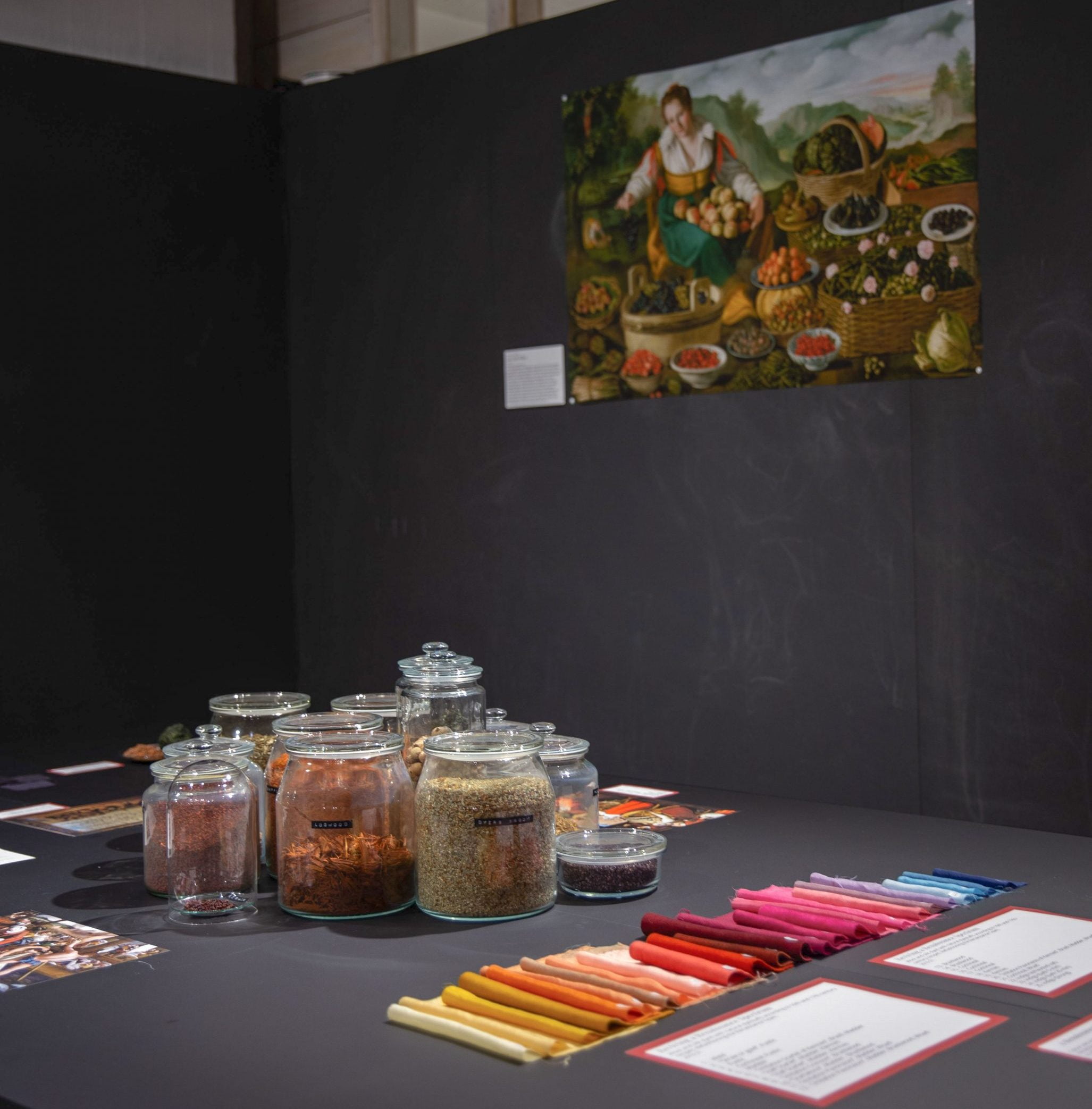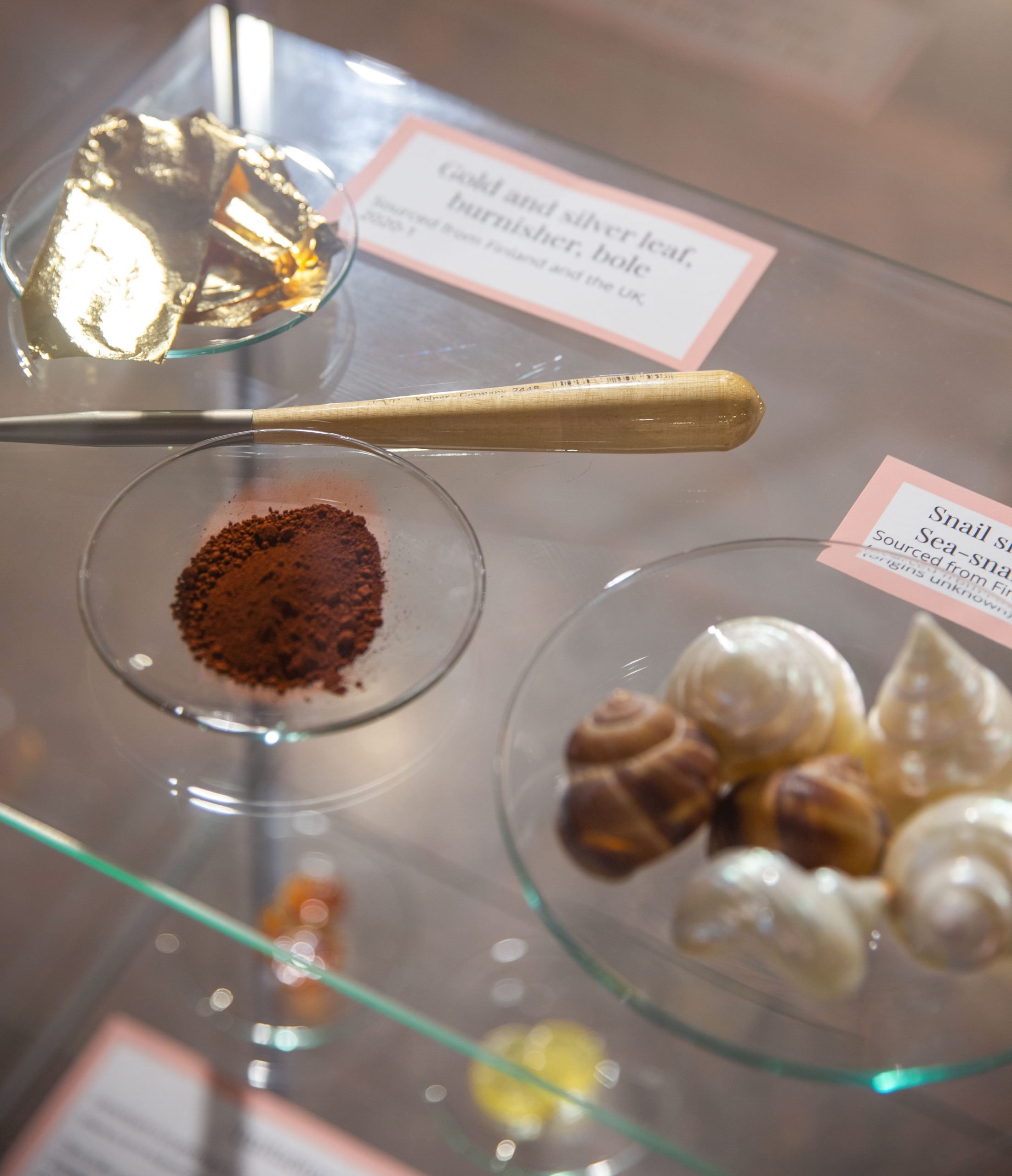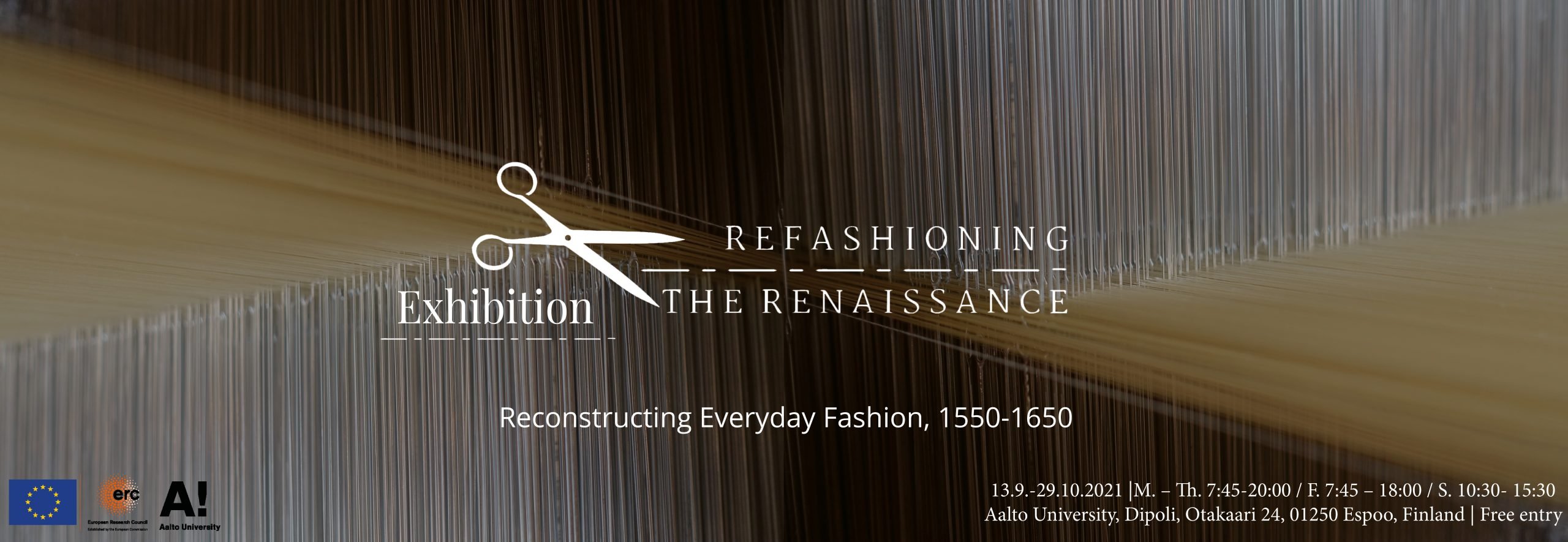13 September – 29 October 2021
Aalto University, Dipoli, Otakaari 24
_____________________________________________________________________________
When we think of the renaissance era, we can easily imagine deep red velvets, huge cartwheel linen ruffs, and sparkling gems and pearls worn by Kings and Queens. But what about the vast majority of the working population – urban artisans such as innkeepers, barrel makers, tailors or fruit-sellers? What did they wear to look fashionable on the streets of Florence, London, Copenhagen or Nuremberg?
This is a key question that Refashioning the Renaissance, a European Research Council project based at Aalto University, has been exploring. In this exhibition you will meet some of the artisans we haveuncovered in archival records who owned brightly dyed, elegantly trimmed, and innovatively styled clothing and accessories. You will see from visual sources, accounting records, and written texts that everyday people – bakers, butchers, and street-sellers –bought, wore, and were interested in participating in fashion.
The early modern era, c.1550-1650, saw a transformation in the cultural and material experience of fashion among ordinary people. Astrade expanded, materials, people,and books moved across borders and fashion was a key driver of craft innovation. As a result, novelties like knitted silk stockings, imitation gemstones, and mixed fabrics dyed in a rainbow of hues were available to manypeople for the first time.
But very few items of clothing survive from the renaissance, and those that do can give us a skewed impression of fashion fromthat era. Most of the garments preserved in museums once belonged to members of the socialelites, and are often altered, faded, and damaged. Archaeological finds can also give the impression that everyday clothing was somewhat flat and brown. So how can we bring to life objects that no longer exist?
The Refashioning the RenaissanceProject, in collaboration with researchers, scientists, and makers across the world, has been analysing surviving textiles through close-looking and dye and fibre analysis, following historical recipes, working with craftspeople to makehistorically appropriate objects, and creating digital reconstructions. In this exhibition you can examine some of our experimental reconstructions that revive the brightly coloured silks, expertly-knitted stockings, and ingeniously imitated velvets and pearls that characterise artisan fashion of the era.
Curator: Sophie Pitman
Exhibition Designer: Eero Brandt
Exhibition Coordination: Piia Lempiäinen and Lena Kingelin
Researchand Texts: The Refashioning the Renaissance Project Team: Paula Hohti (Principal Investigator), Sophie Pitman, Michele Robinson, Stefania Montemezzo, Victoria Bartels,Piia Lempiäinen, and Anne-Kristine Sindvald Larsen
Copyediting: Victoria Bartels
Videos: Maarit Kalmakurki, Piia Lempiäinen and Ana de Matos
The Refashioning the Renaissance Project extends special thanks to the Department of Art (Aalto University), Outi Turpeinen, Joanna Weckman, and the Dipoli Exhibition Teamfor their help in preparing this exhibition. This exhibition is part of the Refashioning the Renaissance project that has received funding from the European Research Council (ERC) under the European Union’s Horizon 2020 research and innovation programme (Grant agreement No. 726195).

Photo: Sonya Mantere

Photo: Sonya Mantere


